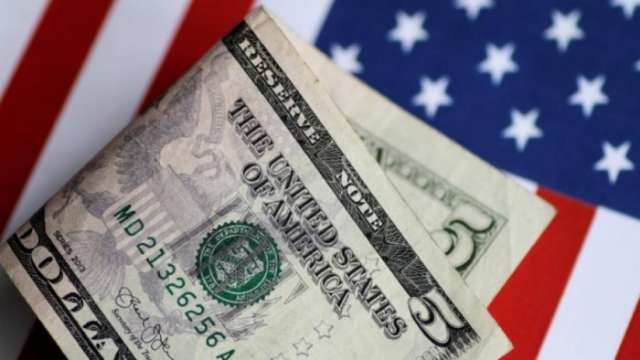Argentinian President Mauricio Macri’s government has asked the International Monetary Fund for a loan that it hopes can stem a peso rout that has driven up interest rates, will slow the economy, and threatens the reform program. This reversal of fortune for the economy partly, though far from fully, reflects broader pressure created by the US dollar’s recent appreciation – a process that is set to accelerate, because both monetary-policy and growth differentials are now favoring the United States.
For a while now, the US Federal Reserve has been well ahead of other systemically important central banks in normalizing monetary policy – that is, raising interest rates, eliminating large-scale asset purchases, and starting the multi-year process of shrinking its balance sheet. This was amplified this year by another catalyst of the dollar’s recent appreciation; a growing, and less favorable, divergence between economic data and expectations in the rest of the world.
During most of 2017, markets were scrambling to catch up to indications of growth outside the US that were markedly more favorable than anticipated. As a result, the most widely followed measure of a trade-weighted dollar index depreciated by 10% last year. Capital flows into Europe and major emerging economies picked up, as investors sought to benefit from the expansion, while enjoying both higher yields and the possibility of capital gains from currency moves.
But, in recent months, measures of economic “surprises” have turned negative, as growth momentum has weakened in Europe and beyond. To cite one dramatic example, declining economic indicators caused the implied market pricing of an interest-rate hike ahead of the Bank of England’s policy meeting this month to plummet from over 90%, or a near-certainty, to 20% in just a few weeks.
Now, there is less external capital chasing returns in Europe and the emerging economies, and some that was there has already flowed back home. So economic and financial factors can be expected to continue to fuel the appreciation of the US dollar. The only way to ease that upward pressure, and to mitigate spillovers, is with effective policy responses.
The good news is that there are sufficient tools to reduce the risk of dislocations. But there is a need for broader implementation within individual economies, and better coordination across borders.
To be sure, some may view the US dollar’s appreciation as consistent with a longer-term rebalancing of the global economy. But, as Argentina’s situation demonstrates, excessively sharp and sudden appreciation of such a systemically important currency risks unbalancing things elsewhere.
Emerging markets have long been particularly vulnerable to this phenomenon. In the run-up to the Asian financial crisis of the 1990s, many emerging economies kept their currencies rigidly pegged to the dollar, and governments tended to borrow heavily in dollars, despite generating most of their revenues in the domestic currency (what economists labeled “original sin”).
As the dollar appreciated in international markets, these economies became less competitive and experienced sharp deteriorations in their current-account positions. Actual and potential capital outflows forced central banks to raise local interest rates, intensifying economic contractionary pressures and undermining the creditworthiness of the domestic corporate sector. Currency devaluation was not an easy option, either, as it would boost inflation and send the costs of servicing external debts soaring to prohibitively high levels.
Many developing countries now have flexible exchange rates, and, by shifting to domestic sources of borrowing, they have reduced the currency mismatches associated with their liabilities. Yet two vulnerabilities remain.
First, the recent extraordinary period of repressed volatility in financial markets, ultra-low interest rates, and dollar weakness unleashed another surge of capital flows to emerging countries, including “tourist dollars,” which tend to flow right back out at the first sign of trouble. Second, empowered by exceptionally generous global financing conditions, a growing number of emerging-market corporates have resorted to external dollar borrowing, materially increasing their financial vulnerability to higher interest rates and adverse currency moves.
Externally driven changes in financial variables have thus become a source of serious risk, especially in countries, like Argentina, with a history of economic mismanagement, large current account deficits, other financial imbalances, and a habit of pursuing too many objectives with too few instruments. With the emerging-market economies still structurally subject to short-term risks of contagion, it is usually just a matter of time until a few countries’ problems result in a tightening of financial conditions for the asset class as a whole.
Beyond challenging emerging markets’ stability, a sudden and sharp appreciation of the US dollar – and, specifically, the losses in trade competitiveness that it causes – threatens to complicate already-delicate trade negotiations. In particular, efforts to modernize the North American Free Trade Agreement (NAFTA) and to establish fairer trade relations between the US and China could be put at risk.
Against this background, policymakers should be implementing measures that take pressure off foreign-exchange markets. This includes, first and foremost, pro-growth policies, particularly for Europe, which, despite recent economic gains, faces significant structural headwinds. Emerging economies, meanwhile, should focus on maintaining solid balance sheets, improving their understanding of market dynamics, and safeguarding policy credibility.
Country-level measures should be reinforced by better global policy coordination, especially to help avoid or break vicious cycles. The IMF, which may soon face more requests for financing, has an important role to play here. Using a bit of extra precaution now is obviously preferable to risking a mess that will need to be cleaned up later.
Mohamed A. El-Erian, Chief Economic Adviser at Allianz, the corporate parent of PIMCO where he served as CEO and co-Chief Investment Officer, was Chairman of US President Barack Obama’s Global Development Council. He previously served as CEO of the Harvard Management Company and Deputy Director at the International Monetary Fund. He was named one of Foreign Policy’s Top 100 Global Thinkers in 2009, 2010, 2011, and 2012. He is the author, most recently, of The Only Game in Town: Central Banks, Instability, and Avoiding the Next Collapse.
Read the original article on project-syndicate.org.
More about: dollar
















































